

 Time for some summer reading, even if the summer has not really wanted to show its face yet here in France. Today was the first time we had lunch on the balcony here in Paris…
Time for some summer reading, even if the summer has not really wanted to show its face yet here in France. Today was the first time we had lunch on the balcony here in Paris…
We have during the month taken a close look at some exciting statistics on wine. Satistics, exciting? Impossible! Some may think… But it is quite fascinating to see how the world of wine evolves.
Which is for instance the biggest wine growing country? Not a big surprise. But it may be a bigger surprise that Turkey, Iran and China is high up on the ranking on vineyard acreage.
Or if we look at consumption. Some countries like New World wines and others are more traditional, and not always the way one would think. Or that Japan was a bigger growth market than China in 2012. Who would have guessed?
We also attempt to make some guesses for the future. Not easy. If ten years ago one would have tried to predict the current status, how accurate would that have been? Perhaps not too bad, if one had looked closely at the numbers.
One thing that is certain is that the New World will play a big part in the future! And that European agricultural policies will be crucial for how the European wine sector develops. If it helps or hinders is not obvious! Or, perhaps it is obvious… Read Per’s argument.
Take a look at the articles and see what is happening in the world of wine. Further down in the Brief!
As we are, or soon will be, in the vacation period perhaps that can trigger you to think of future holidays?
Our autumn tours have no spaces left but we have some exciting things coming up in winter!
We will try and tempt you down to warm weather and summer this coming winter with two wine tours to the southern hemisphere:
- Chile and Argentina: A fantastic tour that incluse not only wine but also a road trip over the Andes, Buenos Aires and many other things.
- South Africa: Now extended with the trendiest of trendy wine regions in the Cape, Swartland, not to forget the other classics of course.
Book your tour now!
We hope to see you on a wine tour or on a tasting, or bien sur on Facebook and Twitter!
Britt & Per
PS: Recommend to your friends to read the Brief!
– – – – –
What’s on at BKWine Tours
- Bordeaux, 18-22 September
- Douro Valley, Portugal, 23-27 October
- South America: Chile and Argentina, 1-16 February 2014
- South Africa, 28 February – 10 March, 2014
For more information please contact us on email or on phone (we’re on French time), or go to our wine travel site on www.bkwinetours.com!
We also make custom designed wine tours – on-demand tours for you and a group of friends, for your company (maybe to scout new winegrowers?), for a special event… We can combine winery visits and wine touring with other activities: gastronomic workshops, visit to an oyster farm, truffles hunting, cheese making, and more. More info on the custom designed and bespoke BKWine wine tours and travel here!
Wine tours in Finnish: We also do wine tours in Finnish. And in German, Norwegian, Spanish… Do you want the latest news and updates on our wine travel activity? Subscribe here! (Second alternative BKWineTours.com)
From the World of Wine
Sancerre from Domaine Henri Bourgeois
 Sauvignon blanc is grown around the world today but from the beginning it was Sancerre in the upper Loire Valley that made this grape famous. We have visited the Domaine Henri Bourgeois, a well-known family in the Sancerre appellation. Their home is in the small village of Chavignol. It is only a few kilometres from the town of Sancerre, which is very beautiful situated on a hilltop, surrounded by sauvignon blanc vineyards. And maybe some pinot noir also, because the red wines from Sancerre are actually becoming more and more popular. Domaine Bourgeois has expanded its operations and now also makes wine in New Zealand. And guess with which grapes?
Sauvignon blanc is grown around the world today but from the beginning it was Sancerre in the upper Loire Valley that made this grape famous. We have visited the Domaine Henri Bourgeois, a well-known family in the Sancerre appellation. Their home is in the small village of Chavignol. It is only a few kilometres from the town of Sancerre, which is very beautiful situated on a hilltop, surrounded by sauvignon blanc vineyards. And maybe some pinot noir also, because the red wines from Sancerre are actually becoming more and more popular. Domaine Bourgeois has expanded its operations and now also makes wine in New Zealand. And guess with which grapes?
Read about the wines and vineyards of the family Bourgeois in Sancerre
Sending wines to Sweden: possible and legal. Here’s how.
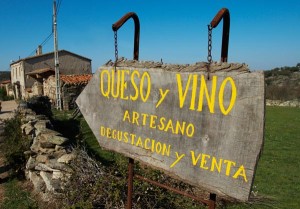 Sometimes winemakers as us about the rules around sending wines to Sweden. Most know that there is a monopoly in Sweden but they also have customers from Sweden asking for shipments. In fact, although there is a retail monopoly for alcohol in Sweden it is perfectly legal for Swedes to buy from abroad. Or to put it another way: wineries can sell directly to customers in Sweden.
Sometimes winemakers as us about the rules around sending wines to Sweden. Most know that there is a monopoly in Sweden but they also have customers from Sweden asking for shipments. In fact, although there is a retail monopoly for alcohol in Sweden it is perfectly legal for Swedes to buy from abroad. Or to put it another way: wineries can sell directly to customers in Sweden.
To explain the situation we have written an article that explains what the buyer needs to do and what the wine producer needs to do, if they want to follow the rules.
Amorim launches new natural cork
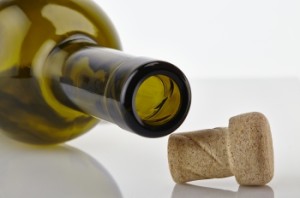 At Vinexpo, recently held in Bordeaux, Amorim launched a new way to seal a wine bottle called Helix Concept.
At Vinexpo, recently held in Bordeaux, Amorim launched a new way to seal a wine bottle called Helix Concept.
Helix Concept is in fact both a bottle and a cork. The cork is a slightly longer version of the kind of cork you would put on a fortified wine. The bottle neck is specially designed with grooves to enable the consumer to open the bottle by only twisting the cork. So no corkscrew is needed. The target group for the Helix Concept is wines with relatively short shelf life in the medium price range. An alternative for those who want the facility of a screw cap but the prestige of a natural cork. The cork is supposed to be treated so that there is no risk if cork taint.
Portuguese company Amorim is the world’s largest producer of natural cork. Learn more about Helix Concept
Domaine Frey-Sohler: Crémant d’Alsace “Emotion” Brut | Britt’s Wine of the Month
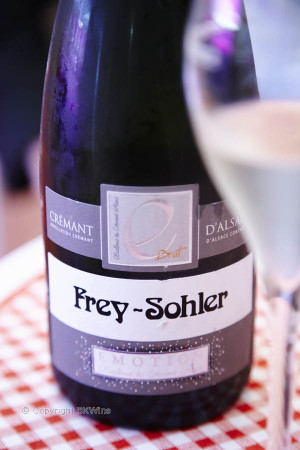 A really good sparkling wine with 48 months on the lees. So it is complex and full-bodied. The grapes are 75% Pinot blanc and the rest is Riesling giving floral and citrus aromas on the nose. The taste is quite dry. A sparkling wine to drink with food if you want but it can be enjoyed at all times.
A really good sparkling wine with 48 months on the lees. So it is complex and full-bodied. The grapes are 75% Pinot blanc and the rest is Riesling giving floral and citrus aromas on the nose. The taste is quite dry. A sparkling wine to drink with food if you want but it can be enjoyed at all times.
“Emotion” is a brand new Crémant d’Alsace, which was launched by brothers Fabien and Nicolas Sohler at Domaine Frey-Sohler at Vinexpo, held recently in Bordeaux. It is very rare with such a long ageing on the lees for a crémant. Usually they only have the minimum of 12 months. Price at the domain is 15 euros.
A Crémant is a French sparkling wine made with the traditional method, ie a secondary fermentation in the bottle. Crémant is an appellation covering several regions in France. In addition to Alsace you can make crémant in the Loire Valley, Burgundy, Limoux and Bordeaux.
Planting Rights in Europe will remain
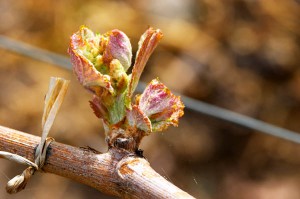 The planting rights in the EU were supposed to disappear. The decision was taken. And then it would have been possible for wine growers to plant more grapes if they thought they could sell more wine. The end of the planting rights would give the slow moving European wine industry a dynamic injection. But in the last minute the big wine producing countries got cold feet. And decided that they wanted to keep status quo after all. In June an EU decision was taken to maintain planting rights as they have been since the 1960s with only a few small changes.
The planting rights in the EU were supposed to disappear. The decision was taken. And then it would have been possible for wine growers to plant more grapes if they thought they could sell more wine. The end of the planting rights would give the slow moving European wine industry a dynamic injection. But in the last minute the big wine producing countries got cold feet. And decided that they wanted to keep status quo after all. In June an EU decision was taken to maintain planting rights as they have been since the 1960s with only a few small changes.
Europe’s vine acreage is shrinking; that of the rest of the world is increasing. Is this really the right policy for the EU?
Read more about the planting rights agreement
Rain, wind and hail
The bad spring turned into a cold, rainy and windy early summer in France. Hail, storms and even small tornadoes have occurred. Some regions have suffered worse than others. For example, Vouvray in the Loire valley was hit by devastating hail combined with extremely strong wind on the morning of June 17. A large part of the appellation was hit (1500 hectares) and some growers have had their vineyards totally shattered by the hail.
50% of the affected growers in Vouvray have hail insurance.
Read more: www.mon-viti.com
Blending wine as a “real” winemaker. You can do it too!
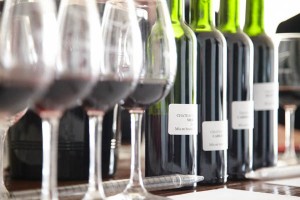 Britt has made her debut as a winemaker. Or rather, she has blended a wine from three different grape varieties, bottled and labelled it and taken it home with her. At home she tasted it blind a few months later and found it to be really good. This, of course, was a relief. The blending debut was made at Montgras in Chile that we visited on our wine tour in South America in February.
Britt has made her debut as a winemaker. Or rather, she has blended a wine from three different grape varieties, bottled and labelled it and taken it home with her. At home she tasted it blind a few months later and found it to be really good. This, of course, was a relief. The blending debut was made at Montgras in Chile that we visited on our wine tour in South America in February.
So how was Britt’s debut as a winemaker?
To blend you own wine is one of many amusing and interesting activities during our South American wine tour. In February 2014 we are off again! We can promise you a fantastic tour.
More info on the wine tour to Chile & Argentina 1-16 February 2014
Book now!
Federico II Rex Sicilie, Azienda Agricola Milazzo, bubbly from Sicily | Åsa’s Wine of the Month
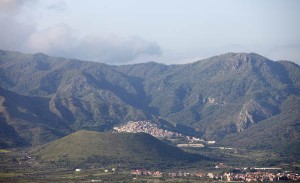 This month I have picked something unusual, a sparkling wine from Sicily. Forget for a moment the champagne, the cremants, or the Franciacortas from northern Italy. Azienda Agricola Milazzo defies the hot climate in Sicily and makes some excellent sparkling wines. To get grapes with sufficient acidity they harvest for example the chardonnay (three different clones) and pinot bianco as early as July.
This month I have picked something unusual, a sparkling wine from Sicily. Forget for a moment the champagne, the cremants, or the Franciacortas from northern Italy. Azienda Agricola Milazzo defies the hot climate in Sicily and makes some excellent sparkling wines. To get grapes with sufficient acidity they harvest for example the chardonnay (three different clones) and pinot bianco as early as July.
The wine is called Federico Il Rex Sicilie and is a Metodo Classico. This means that the second fermentation is in bottle and not on tank. The wine is aged for four years with the lees. The result is an elegant wine with tiny persistent bubbles. The taste is toasty, fresh and long. A wine that is an excellent aperitif but that you can also drink all through a meal with fish. www.milazzovini.com. Price around 35 euro.
Charles Smith from Walla Walla in Washington; we taste his wines
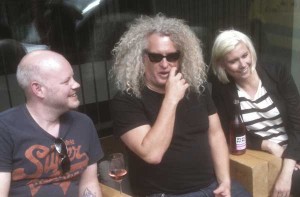 Washington State may be less well known as a wine producer than California. And of course smaller. But you find many interesting wine producers here. And also grape varieties that do better here than they do in California. So these are wines to look out for, even if they are not always so easy to come by in Europe.
Washington State may be less well known as a wine producer than California. And of course smaller. But you find many interesting wine producers here. And also grape varieties that do better here than they do in California. So these are wines to look out for, even if they are not always so easy to come by in Europe.
Therefore, when one of these producers comes to Sweden we try to be there. A beautiful day in May met BKWine reporter Roland Eriksson met Charles Smith from Walla Walla in Washington. Walla Walla, “the new Napa Valley” as they call themselves on their site, is an ambitious region of nearly 1000 hectares and with about 100 wineries, most of them small family estates. Read what Roland writes about the eccentric and talented Charles Smith, crazy or genius.
Uncorked in June, a few favourites
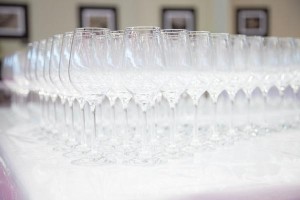 As promised last month, uncorked is now permanent in the Brief. In June we have drunk (or tasted) some very good wines. Here are some of them.
As promised last month, uncorked is now permanent in the Brief. In June we have drunk (or tasted) some very good wines. Here are some of them.
There is a little bit of everything. White Languedoc, Rosé champagne, red from Bulgaria, Rhône Valley, Bordeaux, Burgundy…: Uncorked: Good wines we have tasted recently, June 2013
Southern France irrigates
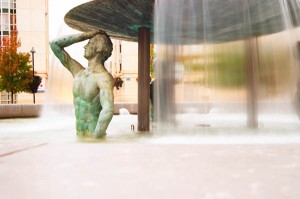 Irrigation in the vineyards is no longer taboo in France, nor is it prohibited. In Languedoc several projects are underway which aims to expand the irrigated area. The goal is to improve the competitiveness of the vineyards by ensuring better yield and constant quality. And if this target is met viticulture as a feature of the landscape is also secured. Which is nice so probably well worth some EU money, don’t you think? The water for irrigation in the Languedoc comes mainly from the Rhone River.
Irrigation in the vineyards is no longer taboo in France, nor is it prohibited. In Languedoc several projects are underway which aims to expand the irrigated area. The goal is to improve the competitiveness of the vineyards by ensuring better yield and constant quality. And if this target is met viticulture as a feature of the landscape is also secured. Which is nice so probably well worth some EU money, don’t you think? The water for irrigation in the Languedoc comes mainly from the Rhone River.
The restrictions today for irrigation in France concerns mainly how far into the growing season you are allowed to water. The irrigated vineyards in the Languedoc primarily produces IGP wine.
Read more: www.lavigne-mag.fr
Ridge Monte Bello | Magnus’ Wine of the Month
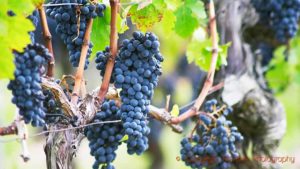
The best wine of the month was an easy choice. One of my favourite producers is Ridge Vineyards in California. The other day I had the opportunity to taste a few of their wines. The standard bearer is Monte Bello, grandiose but not forceful. It is elegant, beautiful, and American wine that in many ways is more European than many Europeans. The winemaker, Paul Draper, has a degree in philosophy from Stanford and this is a humanistic wine that can only improve with age. As someone said: “I don’t know anyone who says they have too many Monte Bello in the cellar.” 2005 and 2006 are already outstanding but will improve over the next few years. 2009 is far too young but will excel from around 2019. Buy it and wait. Or by the little brother if you want to drink now, Ridge Estate Cabernet Sauvignon 2010. www.ridgewine.com
Experience Burgundy! Perhaps on a wine tour?
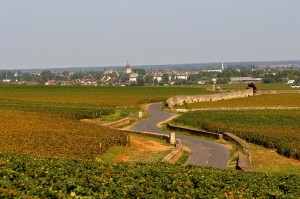 Burgundy is a magical region, filled with wine, food, beauty and history. Gently rolling hills with world-famous vineyards and name that makes you dream. Magnificent cheeses. Velvety red wines. Small pretty villages. We are already longing to get back and we hope to see you there soon on a wine tour.
Burgundy is a magical region, filled with wine, food, beauty and history. Gently rolling hills with world-famous vineyards and name that makes you dream. Magnificent cheeses. Velvety red wines. Small pretty villages. We are already longing to get back and we hope to see you there soon on a wine tour.
Bourgogne is a must, says Per, and tells us about the quintessence of a wine region: Burgundy
Dangerous pesticides for spraying in the vineyard. Dangerous for whom?
The discussion about organic or not organic is often about the taste of the wine. Maybe there should be a greater focus on the possible harmful effects that pesticides can have on people working with and handling the products.
A new French report made L’Institut national de la santé et de la recherche médicale (Inserm) show probable increased risk of Parkinson’s disease, prostate cancer and several other cancers. However, many uncertainties remain and more research is needed, says Inserm in the report.
One of the reasons why wine producers convert to organic farming is precisely to avoid exposing themselves, their families and their employees to these risks.
Read more: www.lavigne-mag.fr
Buy DRC Romanée Conti at 30-40% of the international market price at Systembolaget
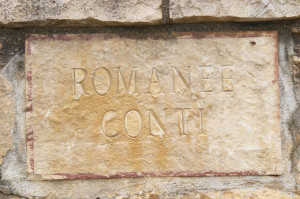 Every once in a while Systembolaget “launches” a new vintage of the Romanée Conti from Domaine de la Romanée Conti. Recently they started selling the 2010 vintage. They had four bottles to sell, each costing just under 4000 euro. Per bottle. This is substantially under the current international market price. To buy you had to submit an order at 10 AM on June 13 on the Systembolaget web site. Four lucky winners in the Systembolaget “lottery” (no, it is not said to be a lottery, just a normal launch, but how else can you see it?) could carry home a bottle that they could easily sell on the international market for double the price or more.
Every once in a while Systembolaget “launches” a new vintage of the Romanée Conti from Domaine de la Romanée Conti. Recently they started selling the 2010 vintage. They had four bottles to sell, each costing just under 4000 euro. Per bottle. This is substantially under the current international market price. To buy you had to submit an order at 10 AM on June 13 on the Systembolaget web site. Four lucky winners in the Systembolaget “lottery” (no, it is not said to be a lottery, just a normal launch, but how else can you see it?) could carry home a bottle that they could easily sell on the international market for double the price or more.
Does it make sense for a state owned monopoly to regularly do this kind of launches? No, says Per in this article: Time for Systembolaget’s Lottery: The winner gets some 40,000 to 60,000 crowns
What happens to all the grape skins?
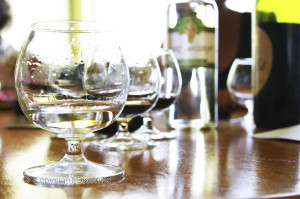 In Europe we like to regulate things and therefore all wine producers must hand over grape skins to a distillery after the grapes have been pressed. Which of course has many advantages. That way you use this waste product as much as you can.
In Europe we like to regulate things and therefore all wine producers must hand over grape skins to a distillery after the grapes have been pressed. Which of course has many advantages. That way you use this waste product as much as you can.
But all grape skins are not destined to become grappa or the French equivalent, marc. There are many other uses for a pressed grape.
Read more on this in Britt’s article The fate of a grape after the pressing: Grappa, industrial alcohol or manure?
Just a spoonful of sugar… Another reason to add sugar in champagne
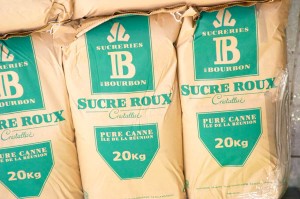 More and more champagne houses decrease the dosage. This is the small dose of sugar that is added to the champagne just after the sediment has been removed (the disgorgement). Not adding any sugar at all has become a trend that we certainly have not seen the end of yet.
More and more champagne houses decrease the dosage. This is the small dose of sugar that is added to the champagne just after the sediment has been removed (the disgorgement). Not adding any sugar at all has become a trend that we certainly have not seen the end of yet.
In Drinks Business we now read that Moët & Chandon’s cellar master Benoît Gouez says that the dosage is not just meant to sweeten the champagne and soften the high acidity. No, it also helps the wine to recover from the disgorgement and protects the champagne from the oxygen that slips into the bottle during this operation.
We assume that his views are not shared by all those who make excellent bone dry champagnes with zero added sugar. The maximum you are allowed to add to a Brut Champagne is 12 grams of sugar per litre.
Rhône Festival in Denmark
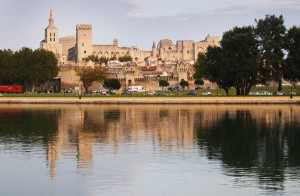 Inter Rhône and The Wine Company in Denmark invites you to the tenth edition of “Rhônevinfestivalen” (the Rhône Festival) on Saturday, September 14. The festival takes place at Dansk Vincenter in Avedøre just outside of Copenhagen.
Inter Rhône and The Wine Company in Denmark invites you to the tenth edition of “Rhônevinfestivalen” (the Rhône Festival) on Saturday, September 14. The festival takes place at Dansk Vincenter in Avedøre just outside of Copenhagen.
There will be more than 30 exhibitors and you will be able to taste around 300 different wines from some of the best producers in this fabulous southern French region.
More information is available here rhone-vinfestival.dk
The world wine market: some conclusions on how the world of wine may change
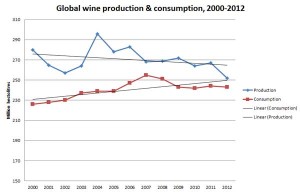 We have published a series of six articles on world wine data (OIV statistics). In the last article we draw some conclusions. Here is an introduction to the article where we talk about what may happen in the future (in the previous ones we look more in detail at the data):
We have published a series of six articles on world wine data (OIV statistics). In the last article we draw some conclusions. Here is an introduction to the article where we talk about what may happen in the future (in the previous ones we look more in detail at the data):
“Bringing it all together: conclusions on the world wine industry situation 2000-20012: Europe is slowly losing its dominant position both as a vine grower, wine maker and consumer. The New World is gaining share. The over-supply of wine that existed some years back has disappeared and we may be heading for a wine “shortage”. More and more wine is exported and thus imported. There are important implications for both wine producers and for agricultural policy makers.”
Read more here: World wine market, implications for winemakers, consumers and policy-makers
Evolution of global grape growing (vineyard) surface area
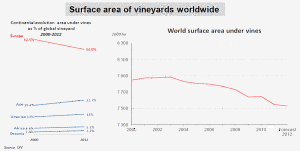 The first article in the series on global vineyard, grape growing, wine production, wine consumption, and wine trade statistics:
The first article in the series on global vineyard, grape growing, wine production, wine consumption, and wine trade statistics:
“World statistics on acreage use for growing vines and producing grapes: The OIV (International Organisation of Vine and Wine) produces some of the most fascinating and telling statistics there is about wine. They have just released a report from their annual congress in Bucharest. We first take a look at the evolution of grape growing in the world and vineyard acreage.
Read more here: The world’s grape growing (vineyard) surface area 2000-2012
Evolution of global grape production 2000-2012
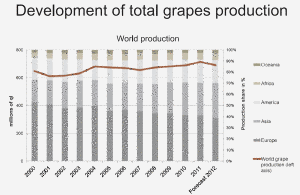 The second article in the series on global vineyard, grape growing, wine production, wine consumption, and wine trade statistics:
The second article in the series on global vineyard, grape growing, wine production, wine consumption, and wine trade statistics:
“Global grape production: short term drop, long term rise, big shift away from Europe, productivity increasing: Global grape production has seen a slight drop in 2012 from 2011 but has since 2000 seen a slight increase. The big change is a shift from Europe that has dropped from almost 63% to 40% of world grape production. The big increases have been in Asia and in the Americas.”
Read more here: The world’s grape production 2000-2012
Global wine production 2000-2012
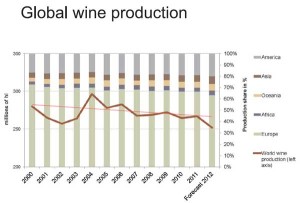 The third article in the series on global vineyard, grape growing, wine production, wine consumption, and wine trade statistics:
The third article in the series on global vineyard, grape growing, wine production, wine consumption, and wine trade statistics:
“Global wine production down in 2012, Europe declining, most others growing. Is Europe strangling its wine sector?: Global wine production decreased 6% in 2012 to 252 million hectolitres. This was partially due to a very small harvest in Europe but also a longer term trend. France, Italy and Spain are still the biggest producers. But the overall trend is a decline in European wine production and a rise in New World countries and China.”
Read more here: The world’s wine production 2000-2012
Global wine consumption 2000-2012
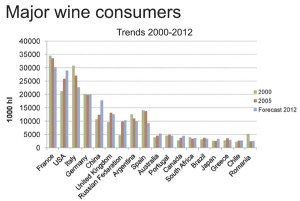 The fourth article in the series on global vineyard, grape growing, wine production, wine consumption, and wine trade statistics:
The fourth article in the series on global vineyard, grape growing, wine production, wine consumption, and wine trade statistics:
“Global wine consumption: who drinks the most wine?: Global wine consumption was stable in 2012 at 243 Mhl. Since 2000 wine consumption has increased somewhat, up 8%. After a peak at 255 Mhl in 2007 it went down but with the stable figure for 2012 the downward trend seems to be stopped. The European countries, traditional big drinkers, are decreasing their consumption, although France keeps the number 1 slot (for the moment). The US is likely to be confirmed as the biggest single wine market. Together with Russia, China, United Kingdom and Australia it is also a growth market.”
Read more here: The world’s wine consumption 2000-2012
Global trade in wine 2000-2012
 The fifth article in the series on global vineyard, grape growing, wine production, wine consumption, and wine trade statistics:
The fifth article in the series on global vineyard, grape growing, wine production, wine consumption, and wine trade statistics:
“Global wine exports and wine imports: The world trade in wine has gone up since 2000 although it went down slightly in 2012. But in real terms (inflation corrected) it seems that the value of the wine has gone down. Winemakers get less money today than in 2000. France is the biggest exporter in value and Italy in volume. The UK and the US are the biggest importers.”
Read more here: World trade in wine 2000-2012
Wine events calendar
Send us an email if you have some event you want on the calendar.
Don’t be an egoist! Share with your friends and other wine enthusiasts! Forward the Brief to your friends! Suggest that they sign up for a free subscription !
© Copyright BKWine








